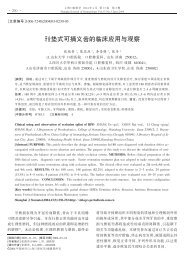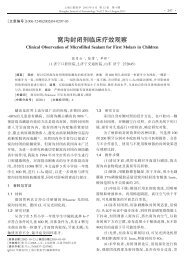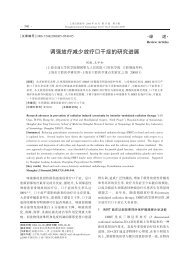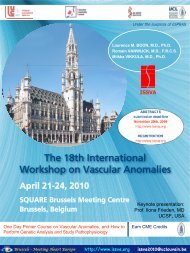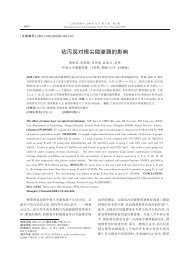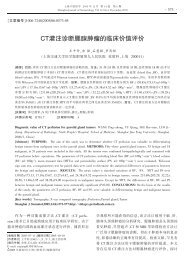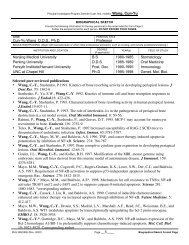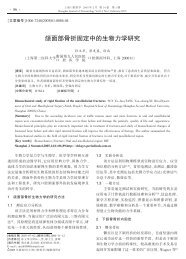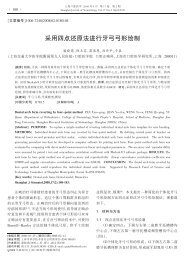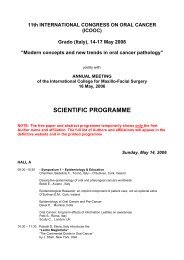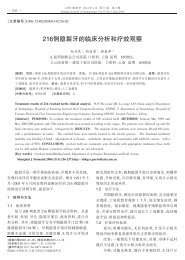core curriculum cleft lip/palate craniofacial anomalies
core curriculum cleft lip/palate craniofacial anomalies
core curriculum cleft lip/palate craniofacial anomalies
You also want an ePaper? Increase the reach of your titles
YUMPU automatically turns print PDFs into web optimized ePapers that Google loves.
Core Curriculum for Cleft Palate and other Craniofacial Anomalies<br />
b. Malformation of the mandible, with varying degrees of shortening or<br />
absence of the ramus of the mandible. Subsequent chin deviation<br />
and malocclusion will occur.<br />
c. Varying degrees of maxillary hypoplasia.<br />
d. Facial nerve weakness or absence in severe cases.<br />
2. Team management typically includes:<br />
a. Protection of hearing in the normal ear.<br />
b. Orthodontic management, combined with rib graft reconstruction or<br />
distraction osteogenesis of the ramus, at age 4 to 6 years.<br />
c. Ear reconstruction with otoplasty or rib cartilage, depending on the<br />
severity of the anomaly.<br />
d. Orthognathic surgery and additional orthodontic management after<br />
facial growth is complete.<br />
B. Craniosynostosis<br />
1. Craniosynostosis is early fusion of the sutures between the bones of the skull<br />
where growth naturally occurs, thus, precluding growth at the suture site.<br />
2. It can occur in isolation or as a part of several syndromes.<br />
3. Non-syndromal craniosynostosis is classified morphologically by the suture<br />
involved and subsequent skull shape.<br />
a. One or two sutures involved with different skull and upper face<br />
deformities depending on suture.<br />
1) Sagittal suture-scaphocephaly<br />
2) Unicoronal suture-plagiocephaly<br />
3) Metopic suture-trigonocephaly<br />
4) Bicoronal sutures-brachycephaly or turricephaly or both<br />
b. Increased intracranial pressure and developmental delay is rare.<br />
c. Correction usually requires one operation in infancy. Secondary<br />
surgery is uncommon.<br />
4. Syndromal craniosynostosis is classified according to the name of the<br />
syndrome.<br />
a. Turribrachycephalic skull shape is common.<br />
b. Five syndromes of which craniosynostosis is a part<br />
1) Crouzon syndrome<br />
2) Apert syndrome<br />
3) Carpenter syndrome<br />
4) Saethre-Chotzen syndrome<br />
5) Pfeiffer syndrome<br />
c. All are inherited in an autosomal dominant fashion, except Carpenter<br />
syndrome, which is recessive.<br />
d. Syndactyly of the hands and feet is part of Apert, Carpenter, and<br />
Pfeiffer syndromes.<br />
e. Increased intracranial pressure and developmental delay are more<br />
common than in non-syndromal craniosynostosis, but are not<br />
universal.<br />
8<br />
© 2004 American Cleft Palate-Craniofacial Association



